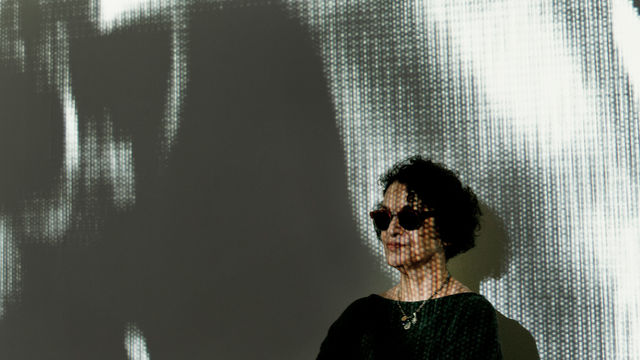
Ana Vitória Mussi
Born in the small Brazilian town of Laguna in 1943, Ana Vitória Mussi began her career after moving to Rio de Janeiro in the 1960s, first studying painting and drawing from 1968 to 1971 with the artist Ivan Serpa (1923–1973) at the Museu de Arte Moderna. In 1971–72 Mussi took photography classes at the Serviço Nacional de Aprendizagem Comercial, and in 1989–90 she learned silk screening at the Escola de Artes Visuais do Parque Lage. Exploring the limits of the photographic medium, Mussi has created installations and three-dimensional pieces that usually appear in dialogue with other image-making techniques, such as silk screen, film, and television.
The relationship between mass media and violence is a central theme for an artist who reached maturity during the years of the Cold War and the military regime in Brazil. This concern is evident in the 1972 series Jornais (Newspapers), in which Mussi painted over news articles about acts of violence in Brazil and abroad, pointing to the tension between revelation and oblivion that characterized censorship at the time. Later in the 1970s she became close to a group of artists that included Letícia Parente (1930–1991); Anna Bella Geiger (b. 1933); Sonia Andrade (b. 1935); the artist, critic, and professor Fernando Cocchiarale (b. 1951); and the critic and curator Paulo Herkenhoff (b. 1949), who are considered pioneers of video art in Brazil. Instead of shooting her own videos, Mussi used photography to reconfigure moving images produced by others, as in the 1975 Boxe na TV (Boxing on TV). This work demonstrates her interest in the spectacle and heroism surrounding sports events, which she relates to mass-media depictions of violence and war.
From 1979 to 1989 Mussi worked as a photojournalist for newspapers in Rio de Janeiro, photographing politicians, celebrities, and high-society events. She returned to art production in 1990 and the following year created pieces that combine photography and silk screen. In the 2000s she revisited her experience as a photojournalist by using her extensive archive in pieces such as Por um fio (Hanging by a thread, 1977–2004), an installation consisting of twenty-two thousand negatives recording images of high-society events. As negatives become the raw material for other works, Mussi challenges photography's representational and reproductive capabilities, since the latent images will remain an untapped potentiality. Her recent production continues to focus on violence, as in Bang (2012), an installation juxtaposing photographic images of the slums of Rio with film stills related to World War II.
Mussi's works are part of such important collections as the Museu de Arte Moderna do Rio de Janeiro, Centro Cultural Cândido Mendes in Rio de Janeiro, and Museu de Arte Moderna de São Paulo. Her work was awarded the acquisition prize at the 5th Salão de Verão, organized in 1973 by the Museu de Arte Moderna do Rio de Janeiro.
—Mariana von Hartenthal
Selected Solo Exhibitions
1972 Ana Vitória Mussi: Jornais, Galeria do Banco Andrade Arnaud, Rio de Janeiro
1991 Ana Vitória Mussi: Asfalto, Galeria Contemporânea, Rio de Janeiro
2000 Ana Vitória Mussi: Eclético, Centro Cultural Oduvaldo Vianna Filho, Rio de Janeiro
2012 Ana Vitória Mussi: Bang, Oi Futuro, Rio de Janeiro
2015 Ana Vitória Mussi: Imagética, Paço Imperial, Rio de Janeiro
Selected Bibliography
Cesar, Marisa Flórido, ed. Ana Vitória Mussi. Rio de Janeiro: Apicuri, 2013.
Herkenhoff, Paulo, and Heloísa Buarque de Hollanda. Manobras radicais: Centro Cultural Banco do Brasil, São Paulo, 8 de agosto a 15 de outubro de 2006. São Paulo: Associação de Amigos do CCBB, 2006.
Museu de Arte de São Paulo: Coleção Pirelli 17. São Paulo: Museu de Arte de São Paulo, 2009.
Um século de arte brasileira: Coleção Gilberto Chateaubriand. Florianópolis, Brazil: Museu de Arte de Santa Catarina, 2007.
Trizoli, Talita. "Ana Vitória Mussi and Thereza Simões: Expanding Poetic Fields in Brazilian Guerrilla War Art during the Military Dictatorship." N.paradoxa: International Feminist Art Journal 35 (January 2015): 19–30.


